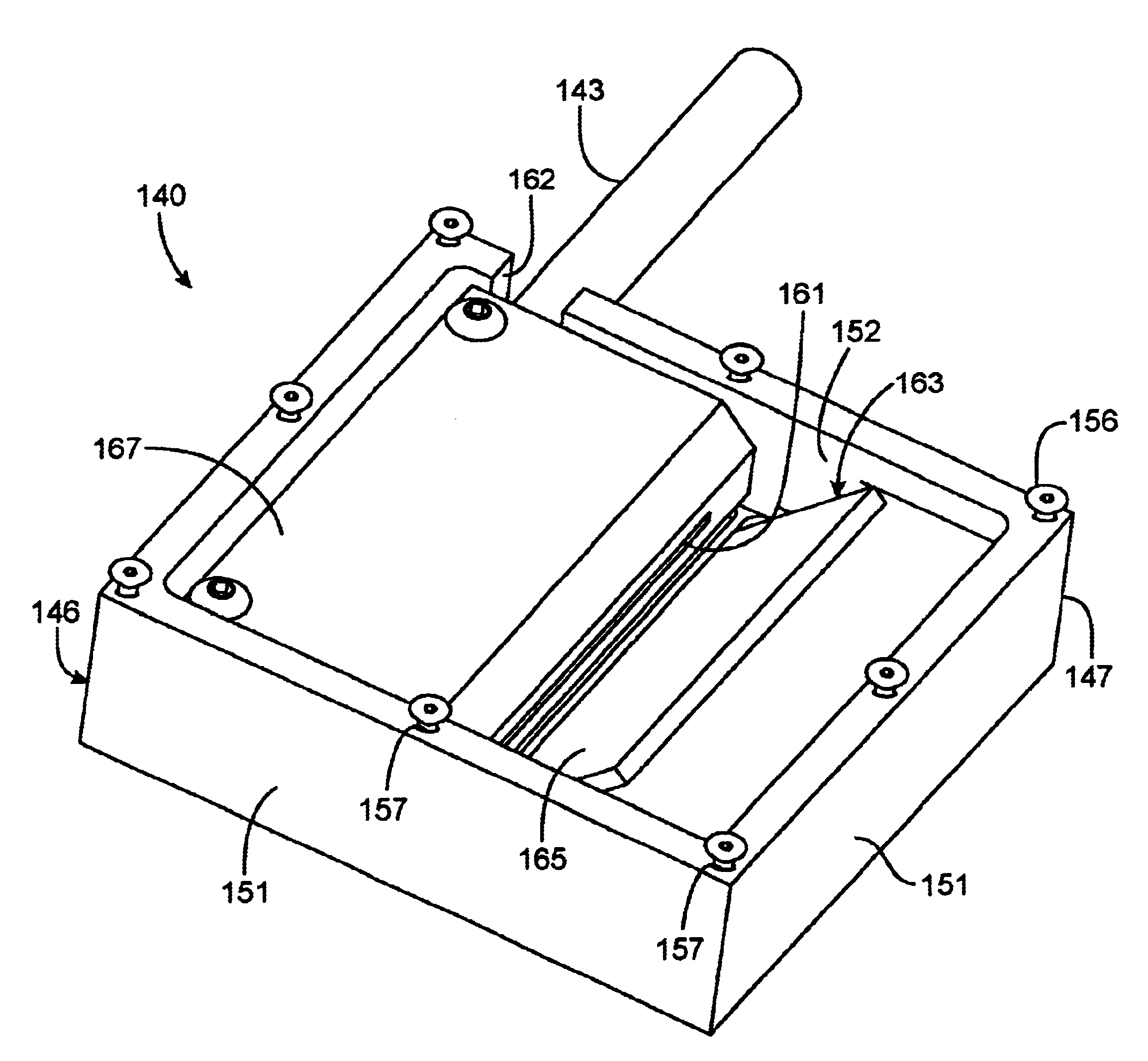Bottom fluorescence illumination assembly for an imaging apparatus
a technology of bottom fluorescence and illumination assembly, which is applied in the field of imaging apparatuses, can solve the problems of requiring specialized cooling, presenting particular design challenges, and requiring specialized cooling, and achieve the effect of reducing the autofluorescence background signal of the specimen itsel
- Summary
- Abstract
- Description
- Claims
- Application Information
AI Technical Summary
Benefits of technology
Problems solved by technology
Method used
Image
Examples
Embodiment Construction
[0040]While the present invention will be described with reference to a few specific embodiments, the description is illustrative of the invention and is not to be construed as limiting the invention. Various modifications to the present invention can be made to the preferred embodiments by those skilled in the art without departing from the true spirit and scope of the invention as defined by the appended claims. It will be noted here that for a better understanding, like components are designated by like reference numerals throughout the various figures.
[0041]Referring now to FIGS. 1-5, a fluorescence imaging assembly, generally designated 20, is provided which includes a light-tight sample box or imaging apparatus 21 having an enclosure wall or upper housing 22 defining a view port 23 (FIG. 5) into a light-tight imaging compartment 25 thereof. A specimen platform 26 is positioned in the imaging compartment 25 which includes a support surface 27 facing toward the view port 23. The...
PUM
| Property | Measurement | Unit |
|---|---|---|
| angle | aaaaa | aaaaa |
| diameter | aaaaa | aaaaa |
| angle | aaaaa | aaaaa |
Abstract
Description
Claims
Application Information
 Login to View More
Login to View More - R&D
- Intellectual Property
- Life Sciences
- Materials
- Tech Scout
- Unparalleled Data Quality
- Higher Quality Content
- 60% Fewer Hallucinations
Browse by: Latest US Patents, China's latest patents, Technical Efficacy Thesaurus, Application Domain, Technology Topic, Popular Technical Reports.
© 2025 PatSnap. All rights reserved.Legal|Privacy policy|Modern Slavery Act Transparency Statement|Sitemap|About US| Contact US: help@patsnap.com



